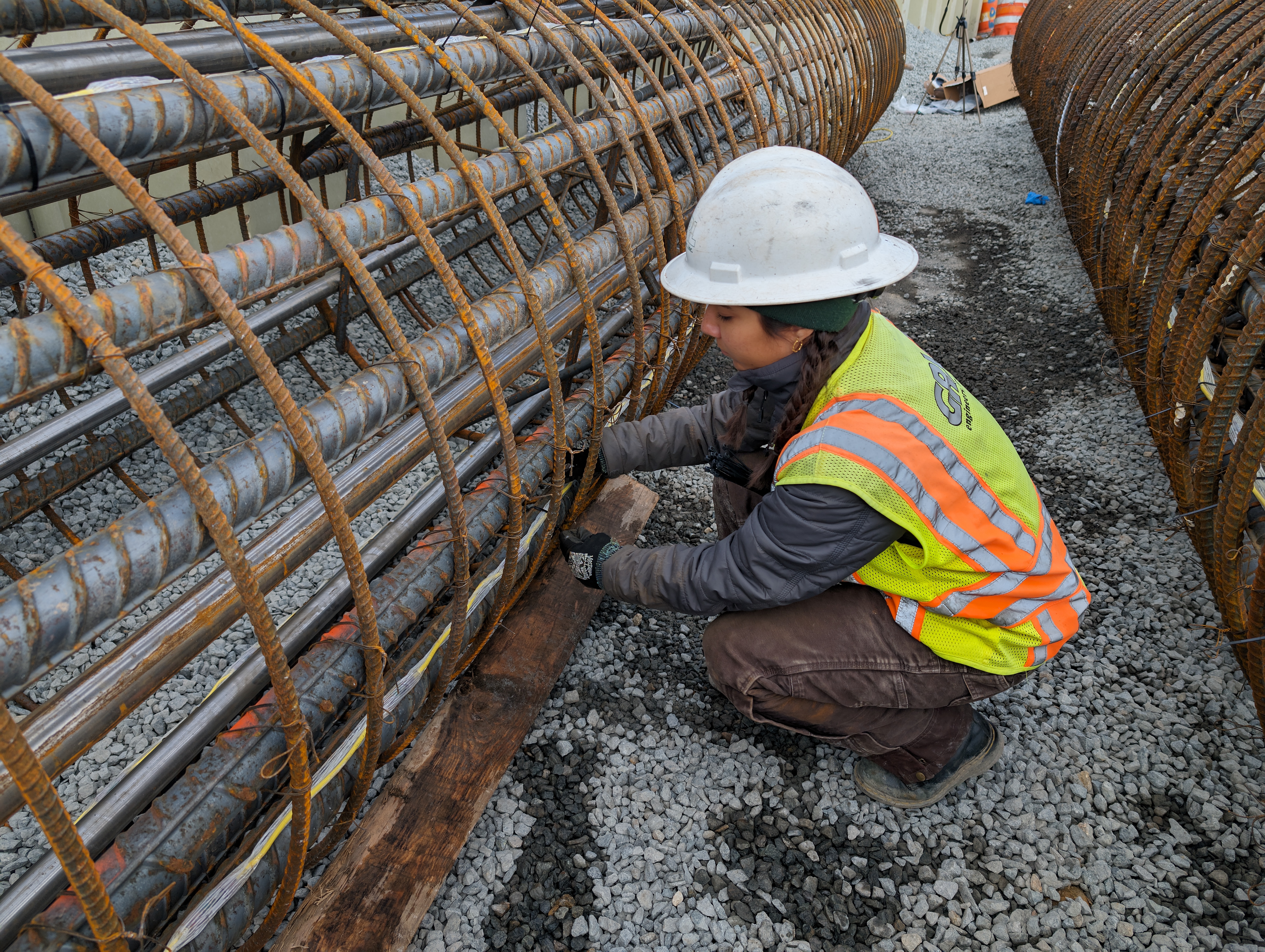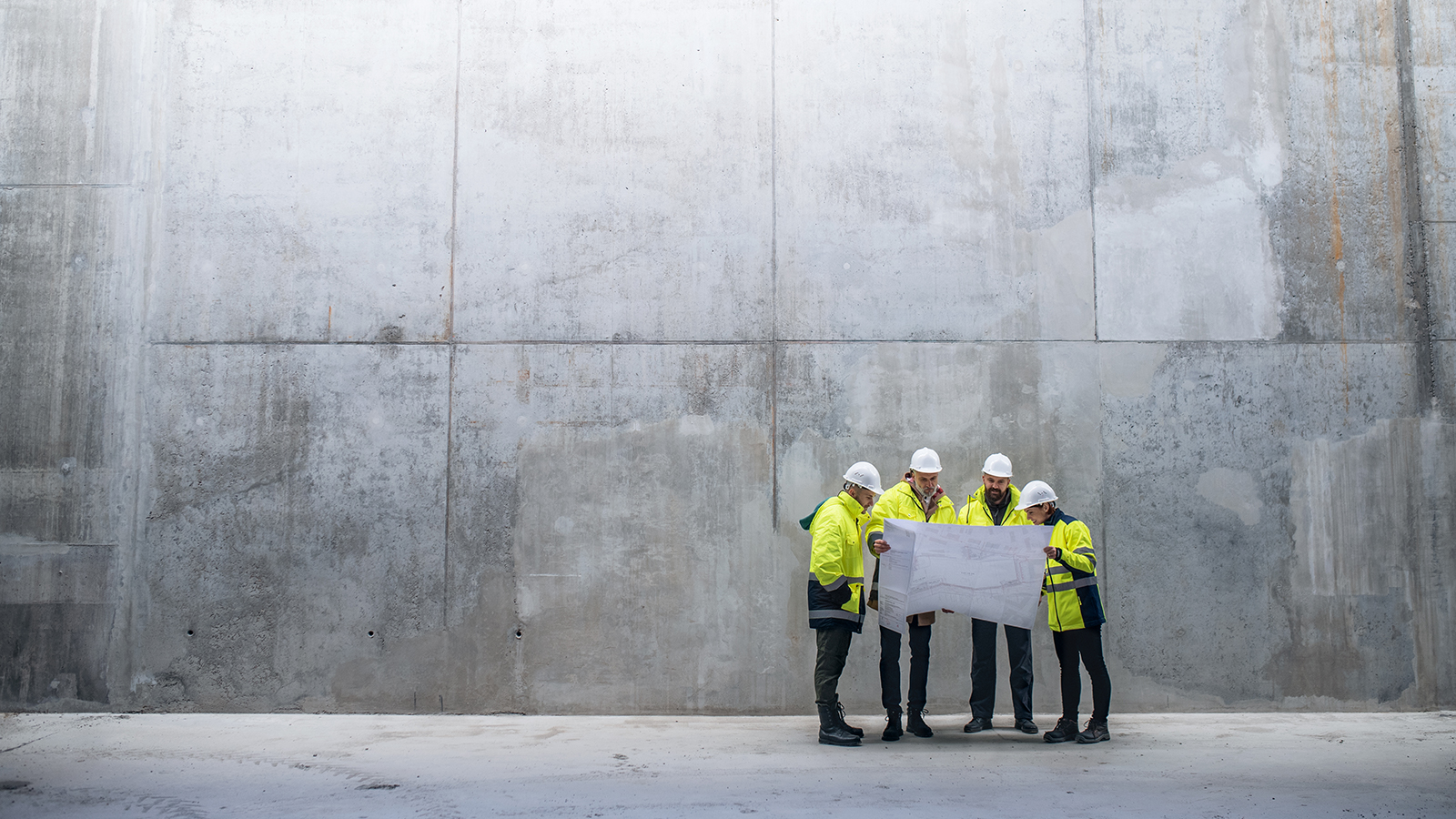How WCGE commercial concrete Can Help You Meet Both Budget and Build Quality Goals
The Important Duty of Concrete Foundation in Structural Integrity and Longevity
When it comes to building a property, the structure is a lot more critical than you may believe. Concrete structures provide unmatched strength and resilience, guaranteeing your framework can stand up to various ecological obstacles. Without a strong base, you take the chance of prospective concerns like shifting or breaking, which can compromise security and value. Comprehending the nuances of concrete foundations could be the key to preserving your financial investment for several years ahead. So, what should you consider following?
Understanding the Significance of Concrete Foundations
Concrete foundations are crucial to the general security of any kind of structure, as they supply the important assistance needed to withstand numerous loads and ecological conditions. When you think of building a home or a commercial area, the foundation is the very first thing you ought to consider. It works as a barrier against wetness, shielding your building from water damages. A well-placed concrete structure likewise stops settling and changing, which can bring about cracks in wall surfaces and floors. You'll wish to guarantee that the structure is properly made and reinforced, as this impacts the longevity of your structure. Furthermore, a solid structure can enhance energy effectiveness by reducing air leakages. Remember, ignoring the importance of a concrete foundation can result in costly fixings down the line. So, purchasing a top quality structure upfront is vital for the stability and toughness of your structure.
Advantages of Concrete Foundations for Structural Stability
While lots of aspects add to a structure's structural integrity, concrete structures provide unmatched sturdiness and toughness. You'll value that concrete can withstand extreme climate condition, standing up to both moisture and temperature level variations. This resilience means your structure is much less likely to experience fracturing or moving over time, which can endanger its safety.Additionally, concrete's fundamental weight gives a strong base, preventing movement throughout all-natural events like quakes or floods. When you pick a concrete foundation, you're additionally choosing reduced upkeep; unlike timber, it won't rot or bring in parasites, conserving you time and money in repairs.Moreover, concrete's fire resistance supplies added safety and security, guaranteeing your framework can withstand heats without substantial damages. Overall, purchasing a concrete foundation indicates you're focusing on the lasting stability and integrity of your structure, making it a sensible selection for any type of building job.
Typical Types of Concrete Foundations
When it comes to constructing foundations, recognizing the common kinds of concrete structures can aid you make informed selections for your task. The most prevalent kinds consist of slab-on-grade, crawl space, and full basement foundations.A slab-on-grade foundation is a straightforward, cost-effective alternative, where a thick concrete piece is put directly on the ground. This type works well in warm climates, as it decreases warmth loss.Crawl area foundations raise the home somewhat above ground, permitting air flow and access to plumbing and electric systems. This layout can assist avoid moisture issues.Full cellar structures supply added living or storage space while offering exceptional architectural assistance. They need more excavation and are commonly used in colder climates to avoid frost heave.
Elements to Consider When Creating a Concrete Foundation

Best Practices for Installing Concrete Foundations
When you're mounting a concrete foundation, correct site prep work is important to assure security (Concrete Contractors Rancho Cucamonga). You'll likewise require to understand support strategies to enhance stamina and durability. Do not overlook the healing process, as it plays an essential role in accomplishing a strong structure.
Website Prep Work Relevance
Although it might appear simple, proper site preparation is essential for ensuring a strong and sturdy concrete structure. Beginning by clearing the location of any particles, plant life, or natural product that might compromise the foundation's honesty. Next off, examine the soil kind and compaction; you could require to excavate or add materials to create a stable base. Level the ground to assure even weight distribution and avoid settling concerns later. Mounting appropriate drainage systems is additionally vital to protect against water build-up, which can weaken the structure with time. Ultimately, mark out the foundation's measurements properly to assist the pouring procedure. By adhering to these actions, you'll establish the stage for a successful concrete structure that stands the test of time.
Reinforcement Strategies Clarified
Once the website is properly prepared, the next action in ensuring a tough concrete foundation includes applying reliable support techniques. You must start by utilizing steel rebar, which offers tensile toughness and helps protect against cracking. Lay the rebar in a grid pattern, making sure it's elevated utilizing spacers to keep stamped concrete stamps proper protection. Additionally, think about making use of wire mesh for additional assistance, specifically in locations subject to heavy tons. Do not neglect to connect the rebar junctions securely with wire. For larger foundations, fiber reinforcement can enhance durability, decreasing the danger of contraction splits. Always adhere to neighborhood building regulations and guidelines to make sure conformity. By applying these support strategies, you'll significantly enhance your foundation's stamina and long life, laying a solid groundwork for your structure.
Curing Process Fundamentals
To assure your concrete foundation cures appropriately, it is very important to preserve ample dampness and temperature level problems quickly after putting. Beginning by covering the surface area with a damp burlap or plastic sheet to preserve dampness. This maintains the concrete hydrated, stopping fractures and making certain stamina. You must likewise keep track of the temperature; suitable treating conditions are in between 50 ° F and 90 ° F. If it's as well warm, haze the surface consistently to stop quick dissipation. For winter, consider using insulating coverings to preserve heat. Go for a treating period of a minimum of 7 days, as this is crucial for ideal stamina development. By following these ideal methods, you'll enhance your foundation's resilience and long life, making sure structural stability for several years ahead.
Maintenance of Concrete Structures for Longevity
To keep your concrete foundation solid and enduring, regular inspections are crucial. You must also ensure efficient drainage remedies remain in area to stop water damages. If you find any kind of cracks, resolving them promptly will save you from larger issues down the line.

Regular Evaluations and Evaluations
While routine evaluations and evaluations may appear like a chore, they're essential for keeping the stability of your concrete foundation. By consistently inspecting for cracks, changes, or indications of wear, you can capture potential issues before they rise into pricey repair services. Search for any water merging around the foundation or uncommon settling, as these can indicate underlying problems. It's additionally sensible to keep an eye on any adjustments in your home's structure, like doors that stick or home windows that don't open smoothly. Maintaining a document of your examinations assists track changes over time, permitting positive upkeep. Ultimately, these analyses guarantee your structure remains steady, supporting the long life and safety and security check these guys out of your whole framework. Do not neglect this crucial facet of homeownership!
Efficient Drain Solutions
Normal assessments can reveal issues like drainage issues that might jeopardize your concrete foundation's security. To avoid water build-up, assure your rain gutters and downspouts straight water away from the structure. Installing French drains can successfully redirect surface and groundwater, reducing pressure on your structure wall surfaces. Additionally, grading the soil around your home helps assure that water streams away, rather than pooling near your foundation.Consider using sump pumps in locations susceptible to flooding, as they actively eliminate excess water. Consistently examine for blockages in drain systems and clear them quickly. You'll shield your structure's integrity and durability by taking these proactive procedures. Bear in mind, effective water drainage services are crucial for maintaining a strong, sturdy concrete foundation.
Trigger Fracture Services
When you notice cracks in your concrete foundation, resolving them immediately is important for keeping its durability. Little cracks can promptly progress right into larger concerns, jeopardizing the architectural honesty of your home. Routinely examine your structure for signs of damage, such as straight or upright cracks. If you find any type of, do not wait-- fix them right away. You can utilize epoxy shots or concrete patching substances, which work for securing fractures. Always comply with the supplier's guidelines and consider speaking with an expert for substantial damages. Bear in mind, prompt repairs not just improve your structure's toughness however also save you cash in the long run by avoiding much more comprehensive repairs down the line. Stay aggressive, and your structure will certainly continue to be strong and safe.
Attending To Typical Problems With Concrete Foundations
Concrete foundations can deal with different issues over time, making it crucial to determine and address them immediately. Among one of the most usual issues is cracking, which can occur due to temperature level variations or clearing up soil. If you observe splits, it's vital to analyze their dimension and depth; tiny splits can typically be sealed, while bigger ones might call for specialist evaluation.Water intrusion is another significant worry. Excess wetness can result in mold development and architectural damage. Guarantee proper water drainage around your structure to alleviate this threat. Additionally, seek indicators of moving or bowing walls, as this can indicate underlying concerns with your structure's stability.Regular evaluations are essential to catch these issues early. If you spot any type of worrying signs, do not think twice to speak with a structure expert. By remaining aggressive, you can preserve the honesty and long life of your concrete foundation, guaranteeing your home stays secure and safe and secure.
Regularly Asked Concerns
How Does Dirt Kind Influence Concrete Structure Efficiency?
Dirt type substantially influences concrete foundation decorative epoxy concrete floors efficiency. If you have actually got large clay, for example, it can trigger changing and splitting. Sandy dirt might result in working out. Recognizing your soil aids guarantee a steady structure.
Can Concrete Foundations Be Fixed if Harmed?
Yes, you can repair damaged concrete structures. Depending upon the level of the damages, strategies like epoxy injection or slab jacking can restore stability. It's best to seek advice from a professional for effective options.
What Is the Common Life Expectancy of a Concrete Structure?
A concrete foundation normally lasts 30 to 100 years, depending on variables like dirt problems, environment, and upkeep. You'll intend to keep an eye on it to ensure it stays healthy throughout its life expectancy.
Exist Option Products to Concrete for Foundations?
Yes, there are alternatives to concrete for foundations, like steel, wood, and even recycled materials. Each choice has special benefits and drawbacks, so you should consider your job's particular requirements when selecting the right product.
Exactly How Does Climate Impact Concrete Foundation Toughness?
Climate considerably affects concrete foundation toughness (West Coast General Engineering industrial concrete). Severe temperatures, dampness, and freeze-thaw cycles can damage the material, resulting in splits and architectural problems. You ought to take into consideration regional climate problems when preparing your foundation to ensure long-term efficiency